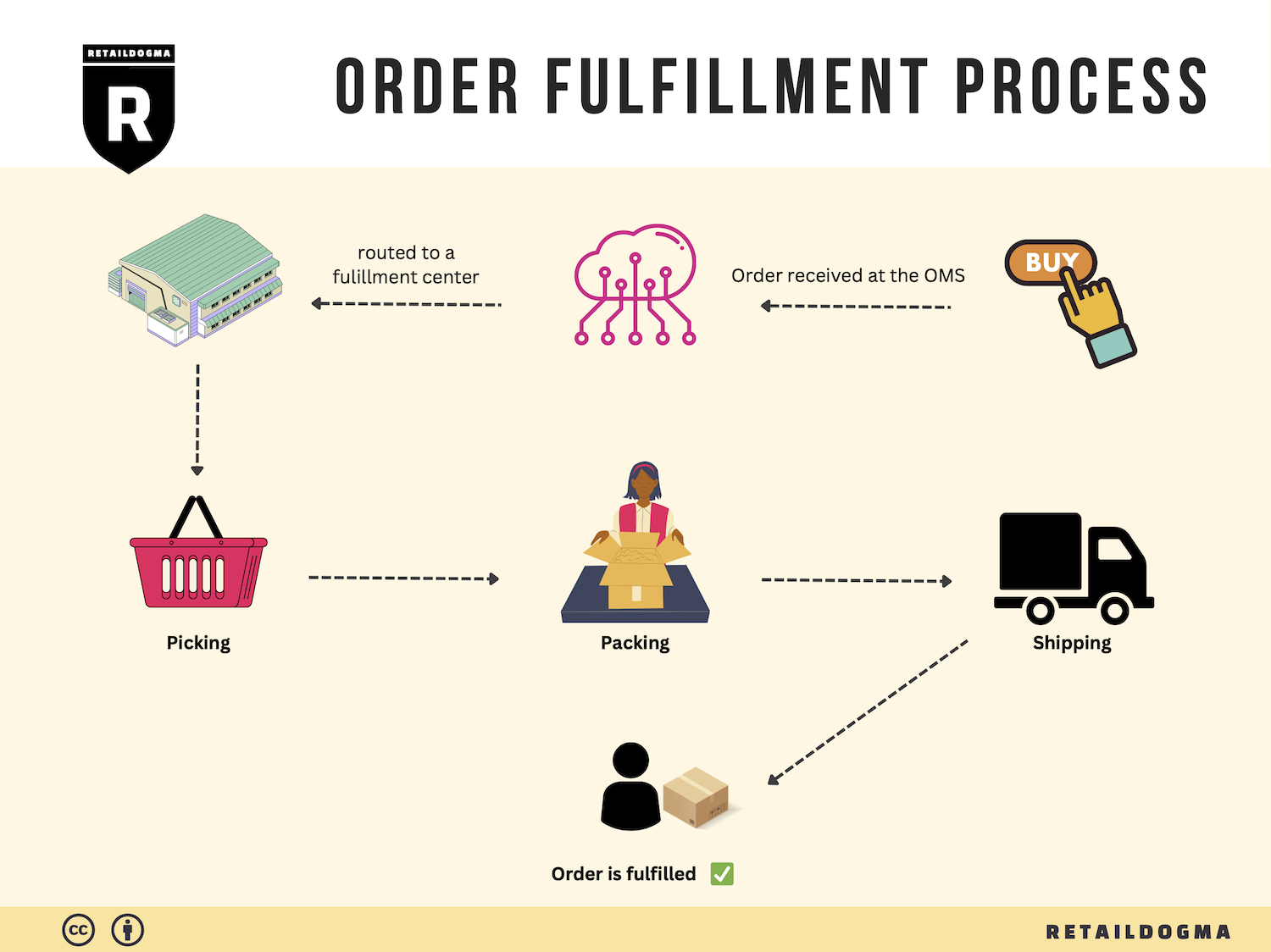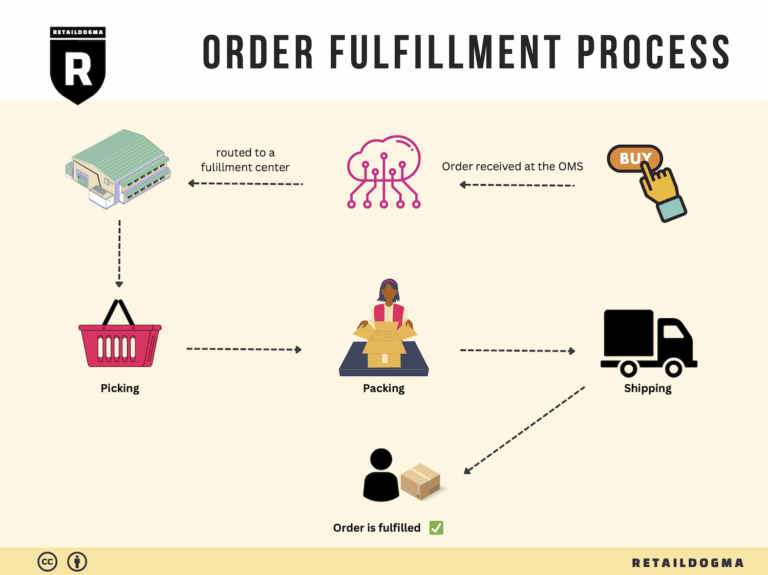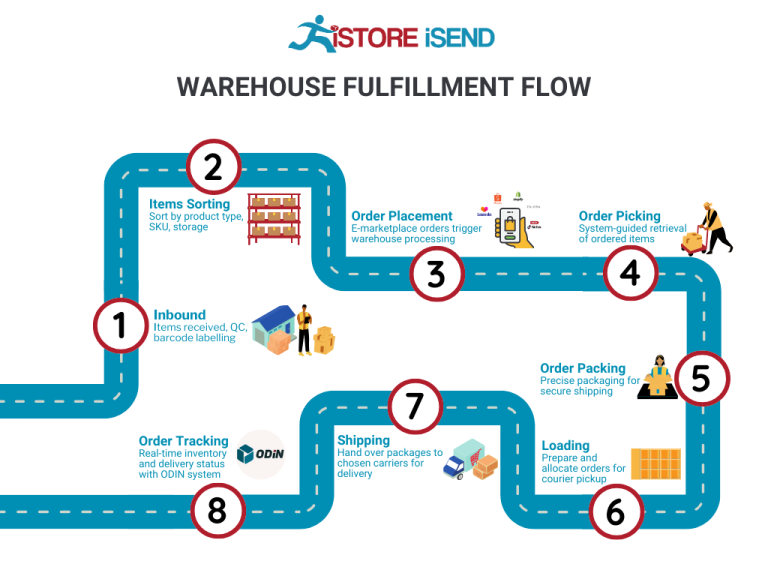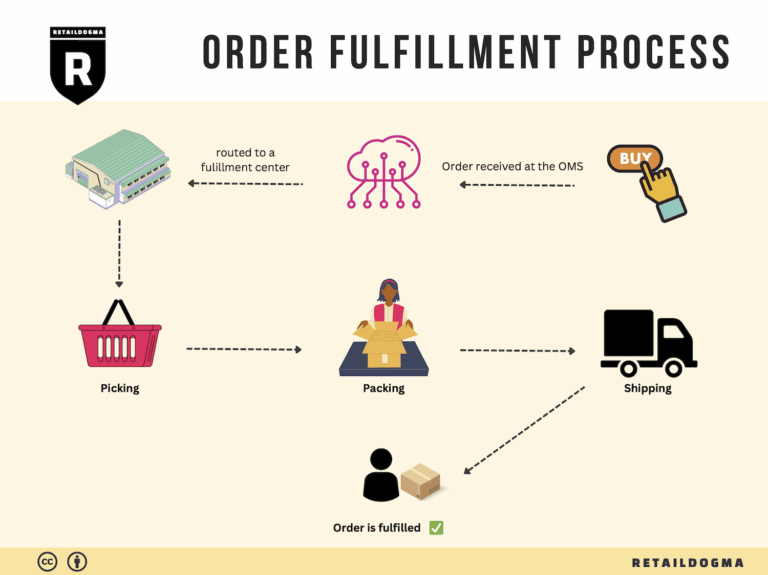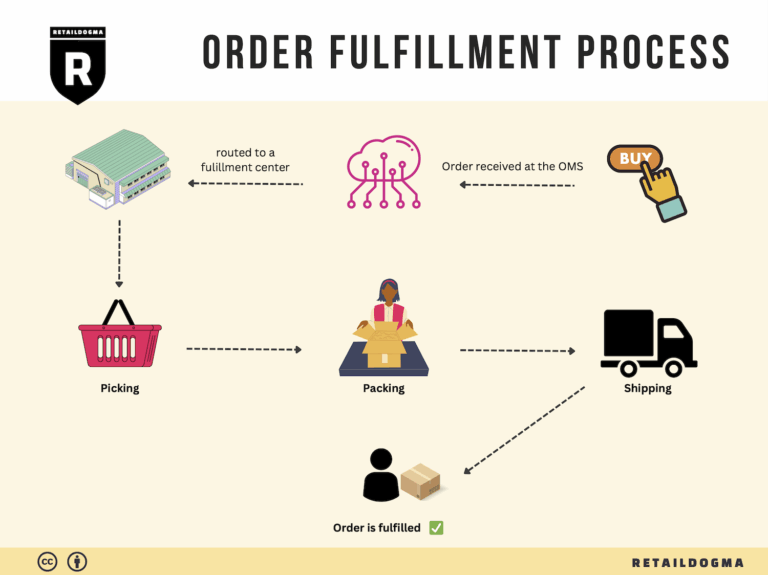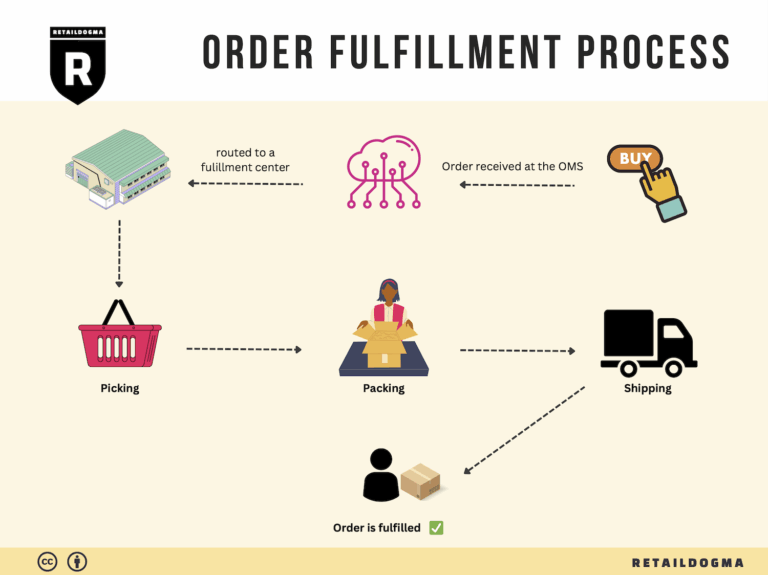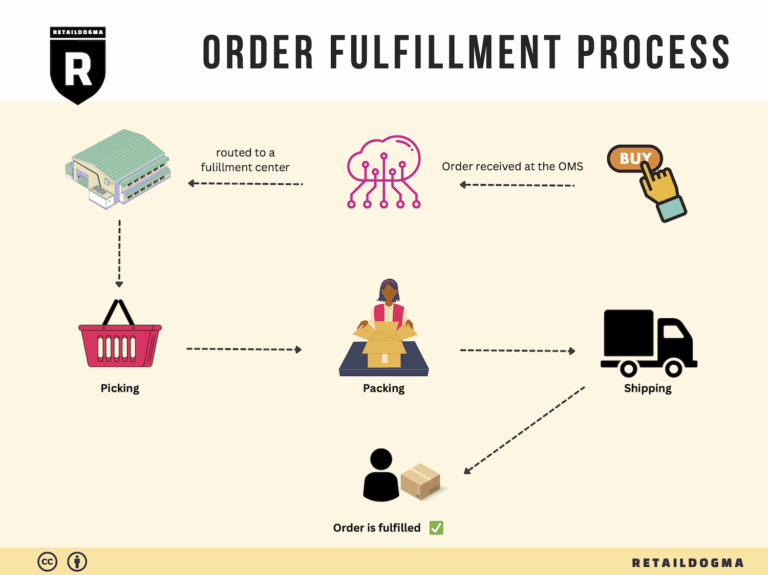What Is A Fulfillment Center? A Complete Guide (2025)
What is E-commerce Fulfillment? An Introduction for Growing Businesses
Navigating the Challenges of Order Fulfillment
As your online business grows, you may find yourself facing a common pain point: the overwhelming task of packing and shipping orders. The excitement of increasing sales can quickly turn into stress as you juggle inventory management, packaging, and timely deliveries. This is where e-commerce fulfillment comes into play—a vital process that ensures your products reach your customers efficiently and effectively.
E-commerce fulfillment refers to the entire process of getting a product from your online store to your customer’s doorstep. This includes picking items from inventory, packing them securely, and coordinating shipping logistics. For many growing businesses, managing fulfillment in-house can become cumbersome, often leading to delays and customer dissatisfaction. As such, it’s essential to establish a clear fulfillment strategy that aligns with your business goals.
In this guide, we will explore the various fulfillment models available to e-commerce businesses, such as Third-Party Logistics (3PL) and Fulfillment by Amazon (FBA). Each model has its unique advantages and may suit different types of businesses depending on size, product type, and customer expectations.
We will also delve into the core services provided by fulfillment partners, including inventory management, order processing, packaging, and shipping. Understanding these services will help you identify what you truly need from a fulfillment partner, allowing you to focus on scaling your business rather than getting bogged down in logistics.
Choosing the right fulfillment partner is crucial for your business’s success. This guide will offer insights into the key factors to consider when evaluating potential partners, such as their location, technology, scalability, and pricing. We will also discuss common pricing structures to help you make informed decisions that fit your budget.

Ultimately, this guide aims to empower you with the knowledge and tools needed to make smart decisions about your logistics strategy. By understanding the intricacies of e-commerce fulfillment, you can streamline your operations, enhance customer satisfaction, and position your business for growth in a competitive online marketplace.
What You’ll Learn In This Guide
- What is E-commerce Fulfillment? An Introduction for Growing Businesses
- The Order Fulfillment Process: From ‘Buy’ Button to Customer’s Door
- Comparing Fulfillment Models: In-House vs. 3PL vs. Dropshipping
- A Deep Dive into Amazon FBA: Pros, Cons, and Who It’s For
- Core Services Offered by Fulfillment Centers
- How to Choose a Fulfillment Partner: A 6-Point Checklist
- Understanding Fulfillment Pricing: A Breakdown of Common Fees
- Frequently Asked Questions (FAQs) about Fulfillment
- Conclusion: Is Outsourcing Fulfillment the Right Move for Your Business?
- Important Disclaimer
The Order Fulfillment Process: From ‘Buy’ Button to Customer’s Door
1. Receiving Inventory
The order fulfillment process begins with receiving inventory into your warehouse or fulfillment center. This step involves checking incoming shipments against purchase orders to ensure that the correct quantities and products have been delivered. Key terms such as SKU (Stock Keeping Unit) are essential here, as they are unique identifiers for each product that allow for efficient tracking and management.
Receiving inventory is crucial because it sets the foundation for accurate stock levels. If discrepancies are found during this stage, they can lead to stockouts or overstock situations later on, which can negatively impact customer satisfaction and cash flow. Establishing a clear process for receiving inventory, including inspection and documentation, helps ensure that your inventory is accurate and ready for storage.
2. Warehouse Storage
Once inventory is received, it needs to be stored in a manner that maximizes space and efficiency. Products are organized in your warehouse based on various factors, including size, demand, and product type. Implementing a systematic approach to warehouse storage, such as ABC analysis, helps prioritize space for fast-moving items while keeping slower-moving products accessible but out of the way.
Effective warehouse storage is vital for streamlining the order fulfillment process. A well-organized warehouse reduces the time it takes to locate products, thus speeding up the picking process. Additionally, clear labeling and organized shelving can enhance inventory accuracy and minimize errors, which is essential for maintaining customer trust and satisfaction.
3. Order Picking
Order picking is the process of selecting products from inventory to fulfill customer orders. This step can be performed using various methods, such as batch picking, zone picking, or wave picking, each suitable for different types of operations. A pick list is often generated, detailing the items needed for each order, which guides warehouse staff in their selections.
The importance of efficient order picking cannot be overstated. The quicker and more accurate the picking process, the faster orders can be fulfilled, leading to shorter delivery times. Investing in technology, such as barcode scanners and warehouse management systems (WMS), can significantly enhance picking accuracy and speed, ultimately improving the customer experience and reducing operational costs.
4. Order Packing
After items have been picked, they must be packed for shipment. This step involves selecting appropriate packaging materials to protect the products during transit and ensuring that all items in the order are included. Key considerations include using void fill materials to prevent movement during shipping and labeling packages correctly for easy identification.
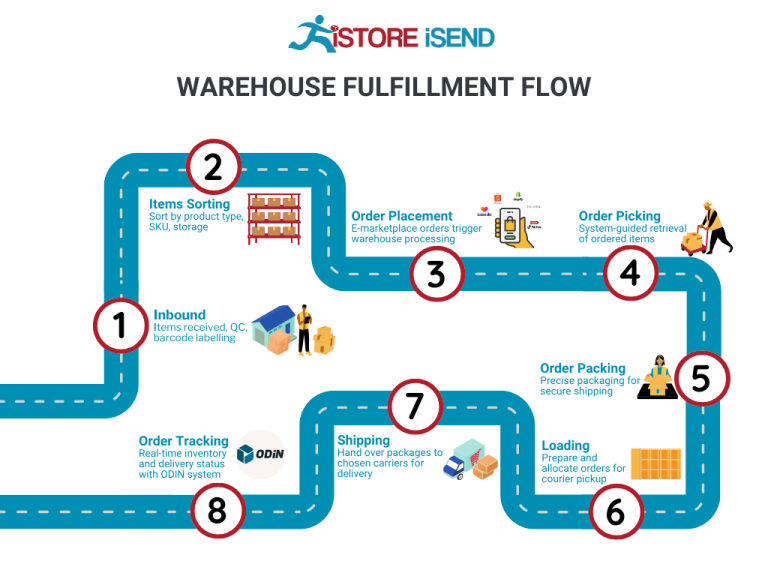
Packing is crucial because it directly affects the customer’s first impression upon receiving their order. Well-packed items reduce the likelihood of damage during shipping, which can lead to costly returns and unhappy customers. Additionally, efficient packing processes can minimize shipping costs by optimizing package size and weight, contributing to overall profitability.
5. Shipping & Delivery
The final step in the order fulfillment process is shipping and delivery. Once packages are packed, they are labeled and handed over to shipping carriers for delivery to the customer. Understanding the various shipping options—such as standard, expedited, or same-day delivery—is essential for meeting customer expectations. Utilizing a shipping management system can streamline this process by automating label printing and tracking.
Effective shipping and delivery are critical for customer satisfaction. Timely delivery can enhance the customer experience and encourage repeat business. Additionally, providing tracking information allows customers to monitor their orders, which can reduce inquiries and improve perceived service levels. As e-commerce continues to grow, offering flexible and reliable shipping options will be a key differentiator for businesses looking to scale successfully.
In summary, mastering the order fulfillment process from receiving inventory to shipping and delivery is essential for e-commerce businesses. Each step is interlinked, and optimizing them can significantly enhance efficiency, reduce costs, and ultimately improve customer satisfaction.
Comparing Fulfillment Models: In-House vs. 3PL vs. Dropshipping
Comparison of Fulfillment Models
| Model | Who Handles Inventory | Best For (Business Stage) | Key Advantage | Key Disadvantage |
|---|---|---|---|---|
| In-House Fulfillment | Business Owner/Staff | Startups and Small Businesses | Complete control over inventory and customer experience | High upfront costs and resource-intensive |
| Third-Party Logistics (3PL) | Fulfillment Partner | Growing Businesses | Scalable solutions with reduced overhead | Less control over fulfillment processes |
| Dropshipping | Supplier/Manufacturer | New Entrepreneurs | Low upfront investment and minimal risk | Limited control over product quality and shipping times |
In-House Fulfillment
In-house fulfillment involves managing the entire order fulfillment process within your own business. This model is particularly suitable for startups and small businesses that require complete control over their inventory and customer interactions. With in-house fulfillment, you handle everything from inventory management to packing and shipping orders. The key advantage of this model is the ability to customize the fulfillment process, which can lead to enhanced customer satisfaction through personalized service. Additionally, having direct oversight allows for better quality control and quicker responses to customer inquiries. However, in-house fulfillment can be resource-intensive. It requires significant upfront investment in infrastructure, staffing, and inventory management systems. As your business scales, you may find it challenging to keep up with increased order volumes, leading to potential delays and inefficiencies.
Third-Party Logistics (3PL)
Third-party logistics (3PL) providers manage the fulfillment process for businesses, allowing you to outsource warehousing, inventory management, and shipping. This model is ideal for growing businesses that are experiencing increased order volumes but want to avoid the complexities of scaling their own fulfillment operations. Partnering with a 3PL can significantly reduce overhead costs and allow you to leverage the provider’s expertise in logistics, which often includes negotiating better shipping rates and improving delivery times. Furthermore, 3PLs usually have multiple fulfillment centers strategically located to expedite shipping to customers. However, the trade-off is that you may have less control over the fulfillment process, which can lead to challenges in maintaining your brand’s quality standards and customer service experience. If your 3PL partner doesn’t meet your expectations, it can lead to customer dissatisfaction and impact your reputation.
Dropshipping
Dropshipping is a fulfillment model where the retailer does not hold inventory but instead forwards customer orders directly to a supplier or manufacturer, who then ships the products directly to the customer. This model is particularly appealing to new entrepreneurs as it requires minimal upfront investment and eliminates the need for warehousing, making it a low-risk entry point into e-commerce. The primary advantage of dropshipping is that it allows you to offer a wide range of products without the financial burden of purchasing inventory upfront. Additionally, you can quickly adapt your product offerings based on market trends and customer preferences. However, dropshipping comes with notable disadvantages, including limited control over product quality and longer shipping times. Since you rely on third parties for fulfillment, any issues they encounter—such as stock shortages or shipping delays—can reflect poorly on your business, leading to potential customer dissatisfaction.
A Deep Dive into Amazon FBA: Pros, Cons, and Who It’s For
Understanding Fulfillment by Amazon (FBA)
Fulfillment by Amazon (FBA) is a logistics service provided by Amazon that allows e-commerce sellers to store their products in Amazon’s fulfillment centers. Amazon then takes care of the storage, packaging, and shipping of these products directly to customers. This service has gained immense popularity among sellers due to its ability to streamline the order fulfillment process and enhance customer experience.
How FBA Works
-
Product Listing and Inventory Management: Sellers create product listings on Amazon and choose which products they want to fulfill through FBA. They send their inventory to Amazon’s fulfillment centers, where it is stored until an order is placed.
-
Order Processing: When a customer places an order for a product fulfilled by FBA, Amazon handles the entire process. This includes picking the product from the warehouse, packing it, and shipping it to the customer.
-
Customer Service and Returns: Amazon provides customer service for FBA orders, managing inquiries and returns. This allows sellers to focus on other aspects of their business, such as marketing and product development.
-
Prime Eligibility: Products fulfilled through FBA are automatically eligible for Amazon Prime, which offers customers expedited shipping options. This can significantly increase sales as Prime members tend to prefer products that offer fast shipping.
Pros of Using FBA
-
Prime Eligibility: One of the most significant advantages of FBA is that it grants your products Amazon Prime status. This means your items are eligible for free two-day shipping for Prime members, which can enhance your product visibility and sales potential.
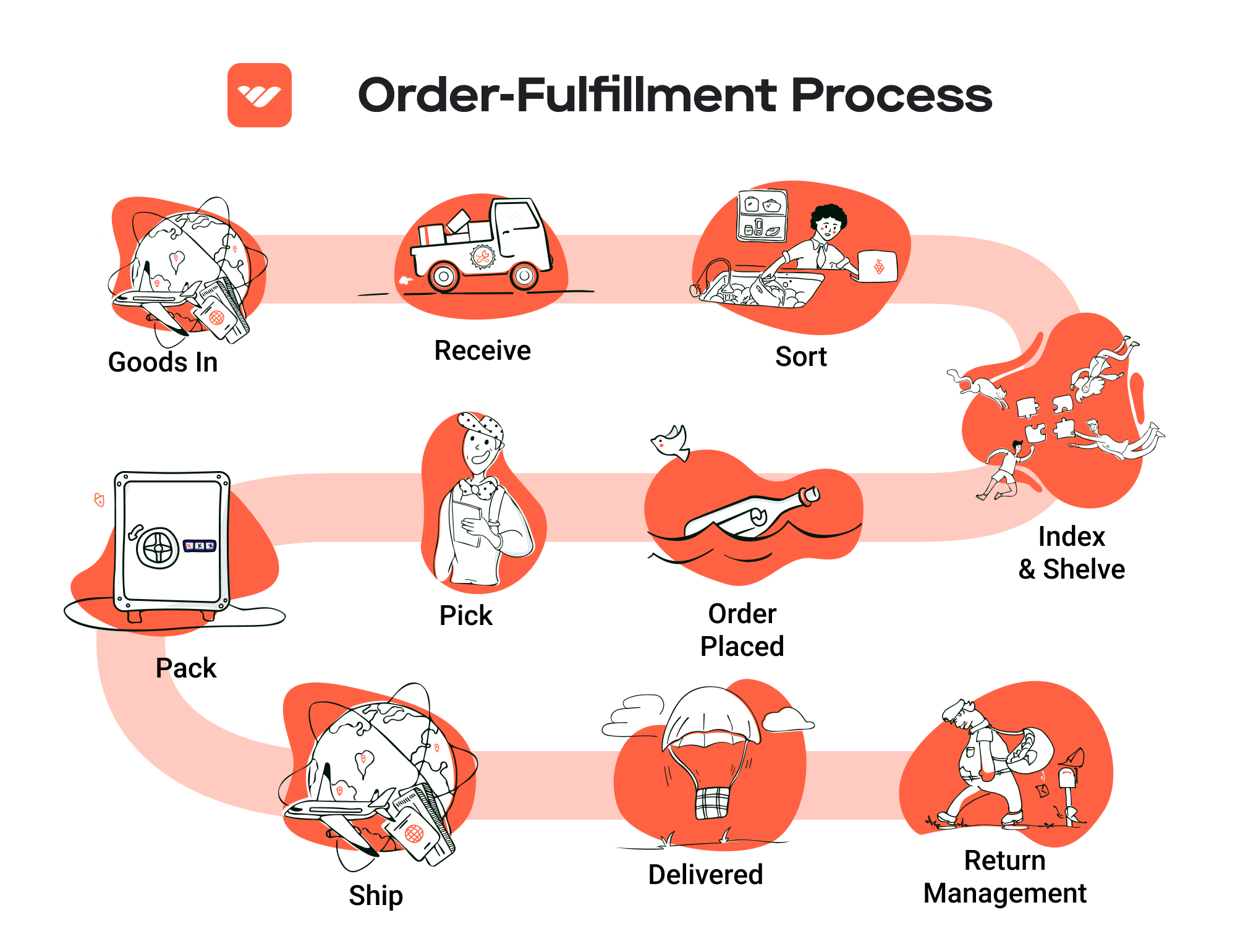
-
Customer Trust: Amazon is a trusted brand, and by using FBA, sellers can leverage this trust. Customers often feel more secure purchasing products that are fulfilled by Amazon, knowing they can rely on Amazon’s customer service and return policies.
-
Multi-Channel Fulfillment: FBA allows sellers to fulfill orders from multiple sales channels, not just Amazon. This means that you can sell your products on your own website or other marketplaces while still utilizing Amazon’s fulfillment network.
-
Scalability: FBA can help businesses scale quickly without the need for significant investment in infrastructure. As sales increase, sellers can send more inventory to Amazon without worrying about warehousing or shipping logistics.
-
Time Savings: By outsourcing fulfillment to Amazon, sellers can save considerable time on order processing, shipping, and customer service, allowing them to focus on growing their business.
Cons of Using FBA
-
High Fees: While FBA can simplify logistics, it comes at a cost. Amazon charges various fees, including storage fees for inventory stored in their warehouses and fulfillment fees based on the size and weight of the products. These costs can add up, especially for small businesses with thin margins.
-
Strict Inventory Rules: Amazon has stringent rules regarding inventory management. Sellers must comply with these regulations, including maintaining accurate inventory levels and adhering to product preparation requirements. Non-compliance can lead to additional fees or even account suspension.
-
Commingling Risks: FBA uses a commingling system, meaning that your inventory may be stored alongside products from other sellers. This can lead to issues if there are quality control problems or counterfeit goods. If a customer receives a defective product, it could negatively affect your seller rating, even if the problem originated from another seller’s inventory.
-
Loss of Control: By handing over fulfillment to Amazon, sellers relinquish some control over the shipping process. This includes aspects like packaging and branding, which can dilute the customer experience if not managed carefully.
-
Inventory Limitations: Amazon sets limits on how much inventory you can store in their fulfillment centers, particularly for new sellers. This can restrict your ability to scale up during peak seasons if you cannot meet the inventory requirements.
Who is FBA Best For?
Fulfillment by Amazon is best suited for businesses that:
-
Sell High-Volume Products: If you have products that are in high demand and can sustain large sales volumes, FBA can be an effective way to handle logistics efficiently.
-
Are New to E-commerce: Startups and new sellers can benefit from the credibility and trust associated with Amazon, making it easier to gain traction in a competitive market.
-
Desire Quick Scaling: If your goal is rapid growth without the need to invest heavily in logistics and warehousing, FBA offers a viable path to scaling your operations.
-
Focus on E-commerce: Businesses that primarily sell through Amazon or those looking to expand their online sales presence can greatly benefit from the streamlined fulfillment process FBA provides.
-
Prefer a Hands-off Approach: Entrepreneurs who want to focus on product development, marketing, and overall business strategy may find FBA advantageous as it minimizes the complexities of order fulfillment.
In conclusion, while FBA offers numerous advantages that can significantly enhance your e-commerce business, it is essential to weigh these against the potential drawbacks. By understanding the operational nuances and assessing your specific business needs, you can determine if FBA is the right fulfillment solution for you.
Core Services Offered by Fulfillment Centers
Inventory Management & Warehousing
Inventory management and warehousing are foundational services provided by fulfillment centers that enable e-commerce businesses to efficiently store and control their stock levels. Fulfillment centers typically operate large warehouses strategically located near major transport hubs or urban centers. This positioning minimizes shipping times and costs, which are critical factors in customer satisfaction.
The inventory management aspect involves tracking stock levels, forecasting demand, and ensuring that products are available when customers place orders. Advanced software systems are employed to automate these processes, providing real-time visibility into inventory levels and sales trends. This allows businesses to optimize their stock, reducing the risk of overstocking or stockouts.
For e-commerce businesses, the benefits of robust inventory management and warehousing include:
- Cost Efficiency: By outsourcing warehousing to fulfillment centers, businesses can avoid the high costs associated with maintaining their own storage facilities.
- Scalability: As businesses grow, fulfillment centers can easily accommodate increased inventory without the need for significant capital investment.
- Improved Cash Flow: Efficient inventory management ensures that capital is not tied up in excess stock, allowing businesses to invest in other growth opportunities.
- Enhanced Customer Satisfaction: With accurate inventory tracking, businesses can fulfill orders promptly, leading to higher customer satisfaction and repeat business.
Pick and Pack Services
Pick and pack services are at the heart of order fulfillment. This process involves selecting the ordered items from the warehouse (picking) and packaging them appropriately for shipment (packing). Fulfillment centers use sophisticated systems and technology to streamline this process, which can significantly reduce order processing times.
When an order is placed, fulfillment staff quickly access the warehouse management system to identify the location of each item. They then retrieve the items and prepare them for shipping, ensuring that they are packaged securely to prevent damage during transit.
The advantages of using pick and pack services include:
- Speed and Accuracy: Fulfillment centers often employ trained staff and automated picking systems, which can lead to faster processing times and fewer errors compared to in-house operations.
- Customization: Many fulfillment centers offer customizable packaging options that enhance branding and provide a better unboxing experience for customers.
- Scalability During Peak Seasons: During high-demand periods, such as holidays, fulfillment centers can ramp up their operations to handle increased order volumes, allowing businesses to meet customer expectations without the need for additional in-house resources.
- Focus on Core Business: By outsourcing pick and pack services, e-commerce businesses can concentrate on marketing, sales, and product development instead of logistics.
Kitting and Assembly
Kitting and assembly refer to the process of grouping multiple items together into a single package or creating a product from various components before shipping. This service is particularly beneficial for businesses that sell products that require assembly or bundling, such as subscription boxes, gift sets, or promotional bundles.
Fulfillment centers that offer kitting and assembly services can efficiently handle complex orders, ensuring that items are packaged together accurately and in a timely manner. This service not only streamlines the fulfillment process but also enhances the customer experience by delivering ready-to-use products.
Key benefits of kitting and assembly services include:
- Increased Efficiency: By assembling products before shipping, fulfillment centers reduce the time and labor required for both the business and the customer, leading to faster delivery times.
- Enhanced Customer Experience: Delivering a complete product or bundle improves customer satisfaction and can increase the perceived value of the purchase.
- Inventory Optimization: Kitting allows businesses to manage inventory more effectively, as they can track bundled items as a single unit rather than individual products.
- Marketing Opportunities: Bundling products can create promotional offers that attract customers and increase average order value.
Returns Management (Reverse Logistics)
Returns management, also known as reverse logistics, is a critical service offered by fulfillment centers that involves handling product returns from customers. An effective returns management system is essential for maintaining customer satisfaction and loyalty in e-commerce, where customers often expect hassle-free return processes.
Fulfillment centers manage the logistics of returns by providing a streamlined process for customers to send items back, inspecting returned products, and restocking them when appropriate. They can also handle the disposal or recycling of products that cannot be resold.
The benefits of efficient returns management include:
- Customer Retention: A straightforward and efficient returns process can enhance customer trust and increase the likelihood of repeat purchases.
- Cost Reduction: By managing returns effectively, fulfillment centers help businesses minimize losses associated with returned merchandise and streamline restocking processes.
- Data Insights: Fulfillment centers can analyze return data to identify trends and reasons for returns, providing valuable insights that can inform product improvements and inventory management strategies.
- Focus on Growth: By outsourcing returns management, e-commerce businesses can focus on their core operations and growth strategies instead of getting bogged down in the complexities of reverse logistics.
By leveraging these core services, fulfillment centers empower e-commerce businesses to scale efficiently, improve customer satisfaction, and enhance overall operational performance.
How to Choose a Fulfillment Partner: A 6-Point Checklist
Location & Warehouse Network
Choosing a fulfillment partner with strategically located warehouses is crucial for reducing shipping times and costs. The closer your inventory is to your customers, the faster and more cost-effective the shipping will be.
Questions to Ask:
– What is the geographic coverage of your warehouse network?
– How do you determine where to store my products?
– Can you provide average shipping times to key customer locations?
– What are your policies on inventory transfers between warehouses?
Technology & Integrations
In today’s digital landscape, technology plays a pivotal role in the efficiency of your fulfillment operations. A good fulfillment partner should offer a robust technology platform that integrates seamlessly with your e-commerce systems. This will help you manage inventory, track shipments, and handle returns more effectively.
Questions to Ask:
– What technology do you use for inventory management and order processing?
– Do you offer API integrations with popular e-commerce platforms like Shopify, Amazon, and eBay?
– How do you handle real-time inventory updates and order tracking?
– Can your system support multi-channel selling and reporting?
Specializations (e.g., Cold Storage, Oversized Items)
If your products require special handling, such as temperature control for perishable goods or specific storage solutions for oversized items, you need a partner that specializes in those areas. Understanding your specific product requirements will ensure that your fulfillment partner can meet your needs effectively.
Questions to Ask:
– Do you have facilities equipped for cold storage or climate-controlled environments?
– How do you handle specialized packaging and shipping for fragile or oversized items?
– What experience do you have with products similar to mine?
– Can you share examples of how you’ve successfully fulfilled specialized orders in the past?
Scalability & Capacity
As your business grows, your fulfillment needs will likely change. A suitable fulfillment partner should be able to scale with your business, providing the necessary capacity to handle increased order volumes without compromising service quality.
Questions to Ask:
– How do you handle peak seasons and increased order volumes?
– What is your process for ramping up capacity when demand spikes?
– Can you provide case studies or examples of how you’ve managed scalability for other clients?
– What is your policy regarding inventory storage limits and overflow?
Pricing and Contracts
Understanding the pricing structure and contract terms of your fulfillment partner is essential for maintaining profitability. Look for transparency in pricing and a contract that aligns with your business goals.
Questions to Ask:
– Can you provide a detailed breakdown of your pricing structure, including storage fees, shipping costs, and any additional charges?
– What are the terms of your contracts? Are there any long-term commitments or exit clauses?
– How do you handle price changes, and how will I be notified of any increases?
– Are there volume discounts available, and what are the thresholds for those discounts?
Customer Support & Reviews
Excellent customer support is vital for resolving issues quickly and maintaining a smooth operation. Additionally, researching reviews and testimonials can provide insight into the fulfillment partner’s reliability and service quality.
Questions to Ask:
– What customer support channels do you offer (e.g., phone, email, chat)?
– What are your typical response times for customer inquiries or issues?
– Can you provide references or case studies from current or past clients?
– How do you handle errors or issues with order fulfillment, and what is your process for resolving them?
Conclusion
Selecting the right fulfillment partner is a critical step in scaling your e-commerce business. By using this checklist, you can ensure that you choose a partner that aligns with your operational needs, product requirements, and growth goals. Remember that a well-chosen fulfillment partner not only enhances your shipping capabilities but also contributes to customer satisfaction and loyalty. Take the time to thoroughly vet potential partners, as this decision can significantly impact your business’s success.
Understanding Fulfillment Pricing: A Breakdown of Common Fees
Initial Setup Fees
When partnering with a fulfillment service, many providers charge an initial setup fee. This fee covers the costs associated with onboarding your business into their system. The setup process often involves integrating your e-commerce platform with their warehouse management system, configuring your inventory, and establishing operational workflows.
How It’s Calculated: Initial setup fees can vary widely based on the complexity of your operations and the fulfillment provider’s requirements. Some providers may charge a flat fee ranging from $50 to several hundred dollars, while others may base the fee on the volume of products being onboarded or the specific services you require (like custom branding or special packaging).
Receiving Fees
Receiving fees are charged when your inventory arrives at the fulfillment center. This fee compensates the provider for the time and resources involved in unloading, inspecting, and storing your products.
How It’s Calculated: Typically, receiving fees can be charged per pallet or per hour of labor, depending on the provider’s pricing structure. For instance, a fulfillment center may charge a flat rate of $20 to $50 per pallet received, or an hourly rate for the staff involved in the receiving process. If your goods arrive in bulk or require special handling, this could influence the fees as well.
Storage Fees (per pallet/bin)
Storage fees are incurred for keeping your inventory in the fulfillment center’s warehouse. This cost is essential for managing your stock levels and ensuring that your products are readily available for order fulfillment.
How It’s Calculated: Storage fees are generally calculated on a monthly basis and can be based on the volume of space your inventory occupies, typically measured in pallets or cubic feet. For example, a common pricing model might charge anywhere from $10 to $30 per pallet per month. Some providers also offer tiered pricing, where the cost per pallet decreases as the total number of pallets stored increases, encouraging businesses to store larger volumes.
Pick & Pack Fees (per item/order)
Pick and pack fees are charged for the labor involved in retrieving products from the warehouse and preparing them for shipment. This process includes picking the items from shelves, packing them into boxes, and preparing them for shipping.
How It’s Calculated: These fees can be structured in several ways: per item picked, per order processed, or a combination of both. For example, a fulfillment provider may charge $1 to $3 per item for picking and an additional fee for packing, which could range from $0.50 to $2 per order. It’s essential to understand how your provider calculates these fees, especially if you have a diverse product range or frequently change your inventory.
Shipping Fees
Shipping fees encompass the costs of transporting your products from the fulfillment center to your customers. This is often one of the largest expenses in the fulfillment process, influenced by factors such as package weight, dimensions, shipping speed, and destination.
How It’s Calculated: Shipping fees can vary significantly depending on the carrier used (e.g., USPS, FedEx, UPS), the service level (standard vs. expedited), and the shipping zones. Many fulfillment providers negotiate discounted shipping rates with carriers, which can be passed on to you as a customer. It’s advisable to ask for a detailed breakdown of shipping fees to understand how they are calculated and to ensure you’re getting competitive rates.
Tips for Getting an Accurate Quote
-
Provide Detailed Information: When requesting quotes, offer comprehensive details about your business, including average order volume, product dimensions, and weight. This will help fulfillment providers give you a more accurate estimate.
-
Ask About All Fees: Ensure you inquire about all potential fees, including those that may not be immediately obvious, such as returns processing fees or seasonal surcharges.
-
Consider Your Growth Plans: Discuss your future growth with the provider to understand how their pricing may change as your order volume increases. Some providers may offer scalable pricing models that can benefit you as you grow.
-
Negotiate: Don’t hesitate to negotiate terms and fees. Many fulfillment centers are open to adjusting their pricing structures to attract long-term partnerships.
-
Get Multiple Quotes: It’s wise to compare quotes from several fulfillment providers to assess the best value for your business needs. Look for transparency in pricing and the services included.
By understanding these common fulfillment pricing models and following these tips, you can make informed decisions that help scale your e-commerce operations effectively.
Frequently Asked Questions (FAQs) about Fulfillment
1. What is ecommerce fulfillment?
Ecommerce fulfillment is the entire process of receiving, processing, and delivering orders to customers who purchase products online. This includes inventory management, order picking and packing, shipping, and handling returns. A solid fulfillment strategy is essential for ensuring customer satisfaction and operational efficiency.
2. What’s the difference between a warehouse and a fulfillment center?
A warehouse is primarily a storage facility where goods are kept until they are needed. In contrast, a fulfillment center is a specialized type of warehouse that focuses on processing orders for delivery. Fulfillment centers manage inventory, pack products, and ship orders directly to customers, often utilizing advanced technology to streamline operations.
3. What is a 3PL?
A Third-Party Logistics (3PL) provider is a company that offers outsourced logistics services, including warehousing, inventory management, and order fulfillment. By partnering with a 3PL, businesses can reduce overhead costs, improve delivery speed, and focus on core business activities without needing to manage logistics in-house.
4. How much do fulfillment services cost?
The cost of fulfillment services varies widely based on factors such as order volume, storage needs, and shipping destinations. Typical costs can include storage fees (charged per cubic foot), picking and packing fees (charged per order), and shipping costs (which depend on weight, dimensions, and delivery speed). It’s essential to request quotes from multiple fulfillment providers to find a solution that fits your budget.
5. How do I choose the right fulfillment provider for my business?
Choosing the right fulfillment provider involves evaluating your business needs, order volume, product types, and customer expectations. Consider factors like shipping speed, technology integration, return management, and customer service. It’s also beneficial to read reviews and request case studies to gauge the provider’s reliability and performance.
6. What are the different fulfillment methods available?
There are several fulfillment methods, including:
– Self-fulfillment: Handling all order processing in-house.
– Third-Party Fulfillment: Outsourcing fulfillment to a specialized provider.
– Dropshipping: Partnering with suppliers who ship products directly to customers, eliminating the need for inventory management.
7. How can I improve my fulfillment speed?
To enhance fulfillment speed, consider the following strategies:
– Optimize inventory placement by storing popular items closer to shipping points.
– Automate order processing with fulfillment software to reduce manual handling time.
– Streamline packing processes by using pre-defined packing materials and techniques.
– Build strong relationships with reliable carriers for faster shipping options.
8. What role does technology play in fulfillment?
Technology plays a crucial role in modern fulfillment operations. Advanced software solutions enable real-time inventory tracking, order management, and data analytics. These tools help businesses streamline processes, reduce errors, and provide better visibility into supply chain performance, ultimately enhancing customer satisfaction.
9. How do I handle returns in ecommerce fulfillment?
Handling returns efficiently is vital for maintaining customer trust. Implement a clear return policy and use a reverse logistics strategy. This may involve:
– Offering prepaid return labels for customers.
– Automating return processing through your fulfillment provider.
– Regularly analyzing return data to identify trends and improve product offerings.
10. What are the benefits of using a fulfillment service?
Utilizing a fulfillment service provides several advantages, including:
– Cost savings on storage and shipping.
– Access to advanced logistics technology.
– Scalability to accommodate growth in order volume.
– Enhanced customer satisfaction through faster delivery and reliable service.
– The ability to focus on core business functions rather than logistics management.
Conclusion: Is Outsourcing Fulfillment the Right Move for Your Business?
Assessing the Benefits of Outsourcing Fulfillment
Outsourcing fulfillment can be a transformative decision for e-commerce businesses looking to scale efficiently. One of the most significant advantages is the time saved. By partnering with a fulfillment service, you can redirect your focus from the logistics of packing and shipping to strategic growth initiatives, product development, and customer engagement. This shift not only enhances your operational efficiency but also allows you to respond more quickly to market demands.
Another key benefit of using a fulfillment service is scalability. As your sales volume increases, so do the complexities of managing inventory and shipping logistics. Fulfillment partners are equipped to handle fluctuations in order volume, ensuring that you can scale operations without the need for significant upfront investment in warehousing and labor. This flexibility is crucial for navigating peak seasons and unexpected surges in demand.
Moreover, fulfillment services bring specialized expertise to your operations. They have established networks and processes to optimize shipping routes, manage inventory effectively, and handle returns seamlessly. This not only improves delivery times but also enhances customer satisfaction—an essential component of retaining loyal customers.
However, it’s vital to choose the right fulfillment partner to support your growth objectives. A misaligned partnership can lead to increased costs, poor service quality, and ultimately, customer dissatisfaction. Take the time to evaluate potential partners based on their capabilities, technology, and customer service reputation.
Call to Action
Now is the time to audit your current shipping process. Consider whether your existing logistics strategy is aligned with your growth goals. If you find inefficiencies or limitations in your capacity to scale, it may be time to explore fulfillment partnerships. Assessing your needs against the offerings of potential fulfillment providers could be the strategic move that propels your business forward.
Important Disclaimer
⚠️ Important Disclaimer
The information in this guide is for educational purposes. Fulfillment services, pricing, and platform features change frequently. Always conduct your own due diligence and consult with providers directly before making business decisions.
